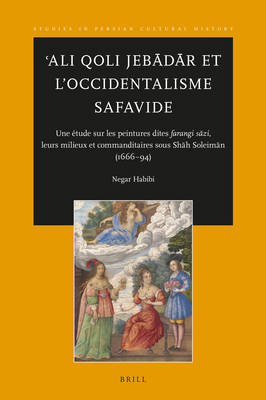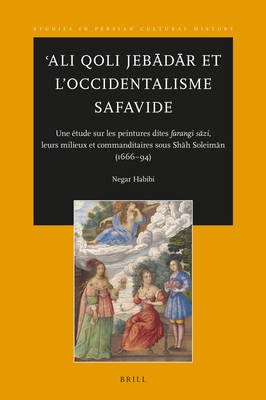
- Afhalen na 1 uur in een winkel met voorraad
- Gratis thuislevering in België vanaf € 30
- Ruim aanbod met 7 miljoen producten
- Afhalen na 1 uur in een winkel met voorraad
- Gratis thuislevering in België vanaf € 30
- Ruim aanbod met 7 miljoen producten
Zoeken
Omschrijving
By scrutinizing every possible Persian and European written source on the subject, Negar Habibi discusses the paintings known as farangi sāz, and in particular those of ʿAli Qoli Jebādār, one of Iran's most important Safavid artists of the 2nd half of the 17th century.
En resserrant plusieurs sources écrites persanes et européennes, Negar Habibi discute des peintures connues sous le nom de farangi sāzi, spécialement celles de ʿAli Qoli Jebādār, l'un des artistes emblématiques de la 2ème moitié du XVIIe siècle.
En resserrant plusieurs sources écrites persanes et européennes, Negar Habibi discute des peintures connues sous le nom de farangi sāzi, spécialement celles de ʿAli Qoli Jebādār, l'un des artistes emblématiques de la 2ème moitié du XVIIe siècle.
Specificaties
Betrokkenen
- Auteur(s):
- Uitgeverij:
Inhoud
- Aantal bladzijden:
- 222
- Taal:
- Frans
- Reeks:
- Reeksnummer:
- nr. 13
Eigenschappen
- Productcode (EAN):
- 9789004355873
- Verschijningsdatum:
- 16/11/2017
- Uitvoering:
- Hardcover
- Formaat:
- Genaaid
- Afmetingen:
- 155 mm x 234 mm
- Gewicht:
- 485 g

Alleen bij Standaard Boekhandel
+ 320 punten op je klantenkaart van Standaard Boekhandel
Beoordelingen
We publiceren alleen reviews die voldoen aan de voorwaarden voor reviews. Bekijk onze voorwaarden voor reviews.








